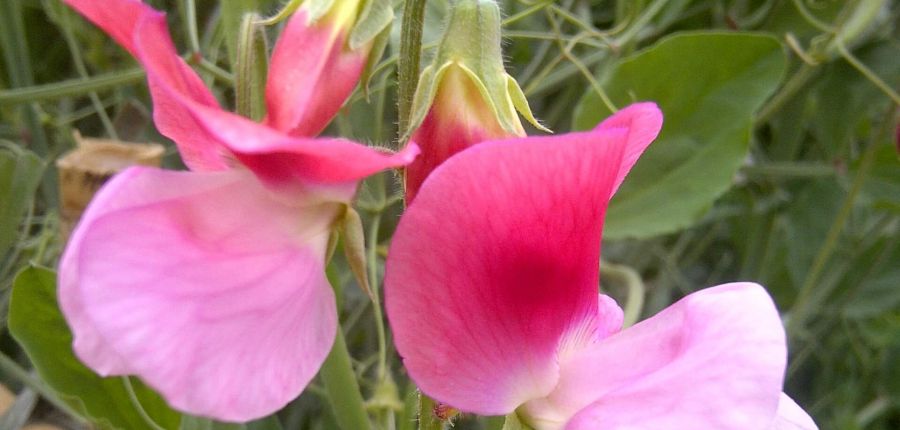Sow Sweet Peas now
Posted By: rocket veg Category: Plant Care, Seasonal AdviceWhen the days are short and the weather unpleasant, it is still possible to do a number of gardening tasks without getting cold, wet and covered in mud. Why not stay indoors, or shelter in your greenhouse and sow some seed which will germinate and develop over the coming weeks, not only a good way of having some sturdy little plants ready for planting when spring arrives, but the sight of the first tiny shoots appearing is enough to banish any ‘winter blues’. Sweet peas are the perfect plant to sow indoors (‘under glass’ is the gardeners’ preferred term) either now or in the next couple of weeks. They can also be sown outdoors in late spring, but why not give it a go now and be ahead of the game.
The sweet pea story
Although sweet peas are regarded as a quintessential English ‘cottage garden’ flower, they originated in Mediterranean countries, southern Italy and Cyprus in particular. They first appeared in this country thanks to a monk called Franciscus Cupani, who lived in a monastery on Sicily in the late 17th century. Noted for being a keen gardener who wanted to share his love of plants – sweet peas in particular – he sent some seed to various plant collectors, including a Dr Uvedale who lived in the east of England. From this original batch of seed, almost certainly similar to the variety ‘Matucana’ available nowadays, a number of new varieties were cultivated buy another celebrated seedsman, John Mason.
The father of sweet pea growing in the UK is considered by many to be Henry Eckford who was responsible for creating many of the varieties which are grown today. By careful cultivation and cross-pollination, Eckford developed plants with larger blooms, varieties which are referred to as the ‘grandiflora’ group of sweet peas.
Another noted developer of sweet peas was Silas Cole, head gardener to the Spencer family, who perfected a beautiful flower with frilly-edged petals – the aptly named ‘Countess of Spencer’ which was exhibited to great acclaim at the first annual show of the Sweet Pea Society founded in 1900.
Sowing sweet peas
When it comes to sowing sweet peas, opinions differ, some people believing that germination is best achieved by soaking the seed overnight; others reckoning that the tough coating of each seed has to be nicked with a sharp knife. I have tried both methods, but find that sweet peas germinate perfectly well when popped straight into moist compost. I generally sow a ring of six or seven seeds in a 10cm pot which I stand in a seed tray and cover with a scrap of horticultural fleece.
Caring for the young plants
When the plants are large enough to handle and before they outgrow the pot, transplant each to its own container, ensuring that the long, trailing roots have a good depth of compost in which to spread. Commercially produced ‘root trainers’ are available for the purpose – slender plastic sleeves which can be eased apart to insert the plant – but empty cardboard tubes work just as well.
When the plants are about 10cm tall, pinch out the growing tip to encourage side shoots to grow. This will help reduce the risk of the plants becoming ‘leggy’, as will placing them in a cold frame or similar. Sweet peas like humus-rich soil, so dig in some of your own compost before planting out in April when warmer weather arrives.
Enjoy your sweet peas
Although dwarf varieties are available, most sweet peas are designed to climb so support is needed in the form of an arch or wigwam made of canes or willow wands. The small plants may need a bit of encouragement with a twist or two of garden twine to get started on their upward journey. If you wish to enjoy a spectacular display and heady scent of sweet peas for many weeks, extend the flowering period by regular picking. If my experience is anything to go by, I can guarantee that once you have mastered a few basic tricks of sowing and growing your own sweet peas you’ll be hooked on this fabulous flower!







